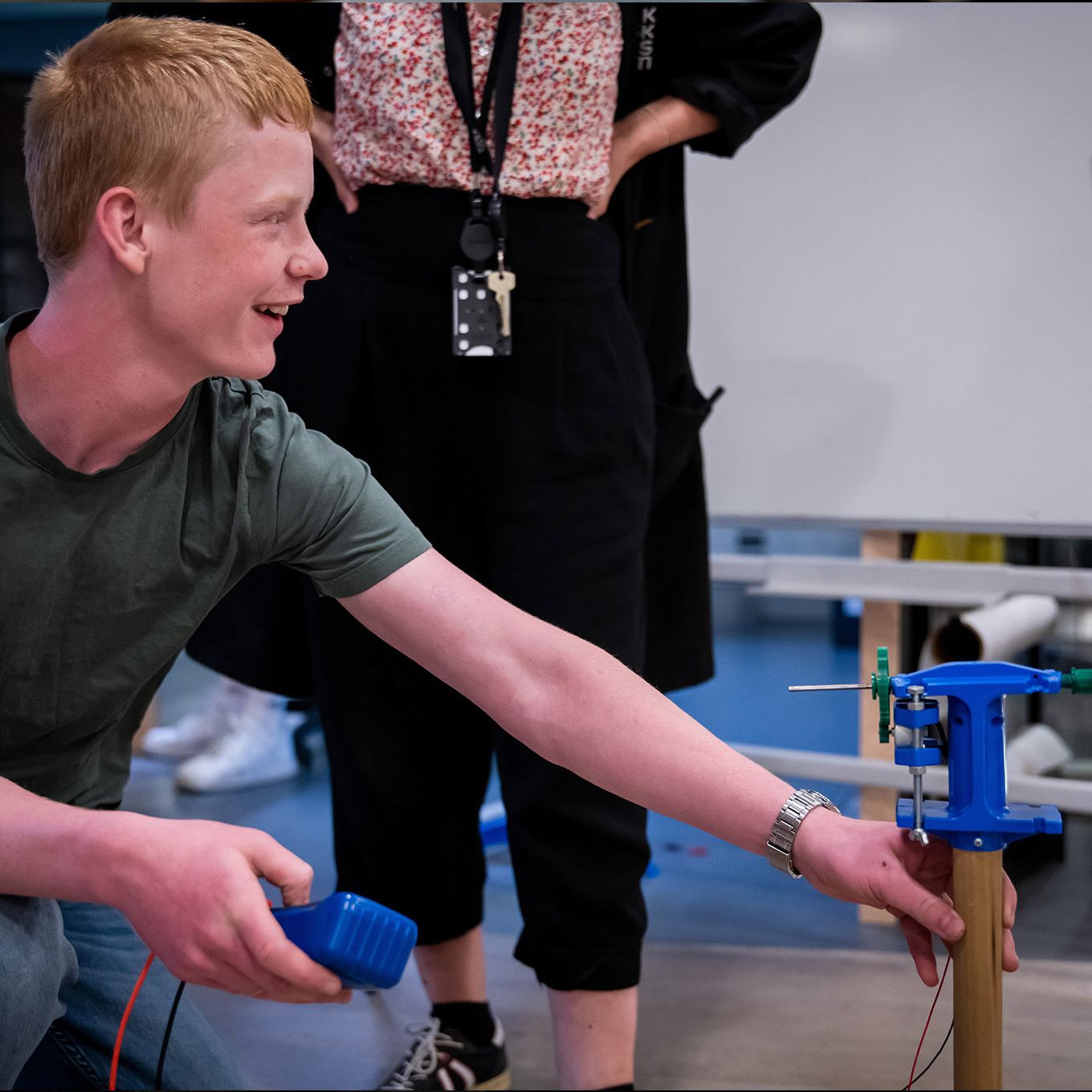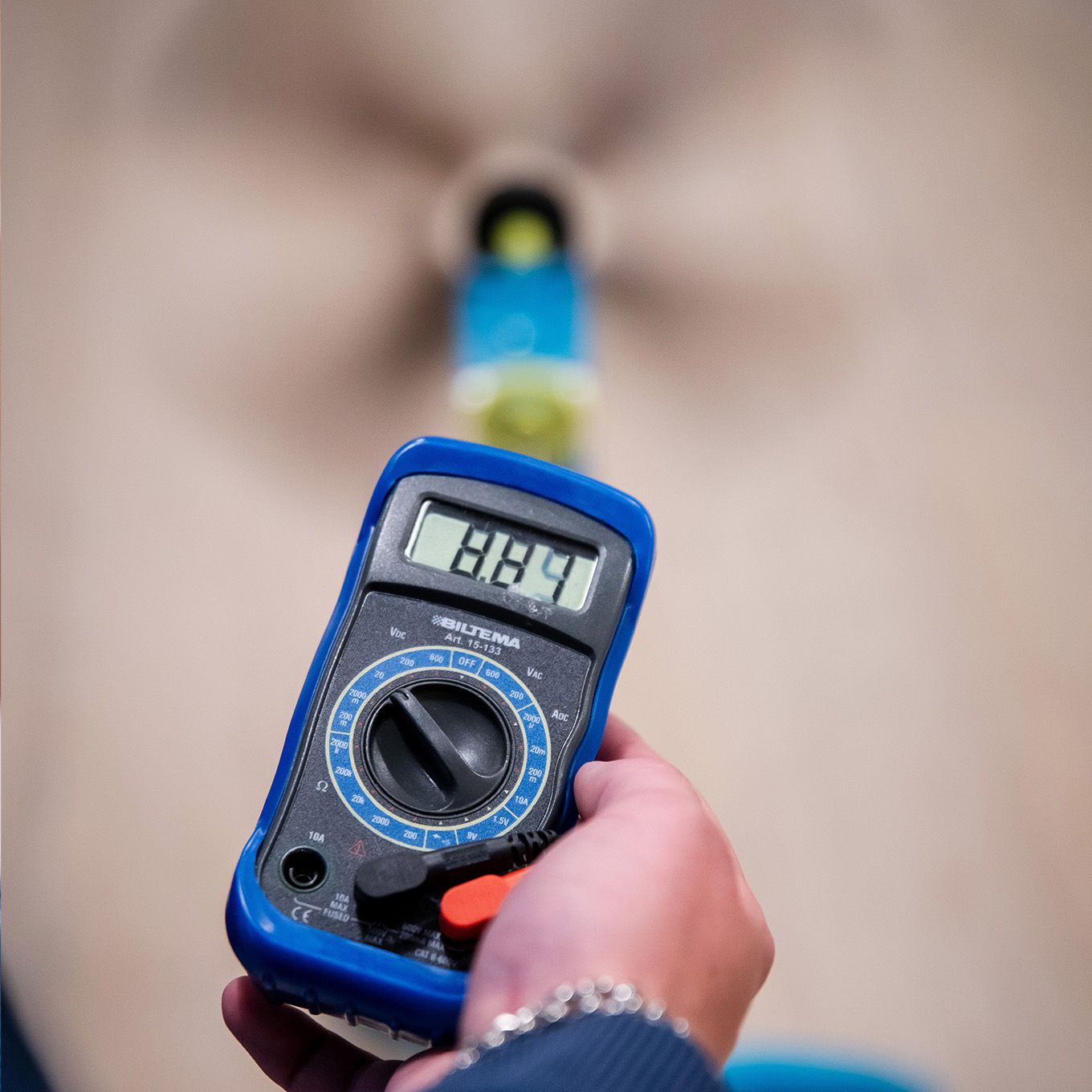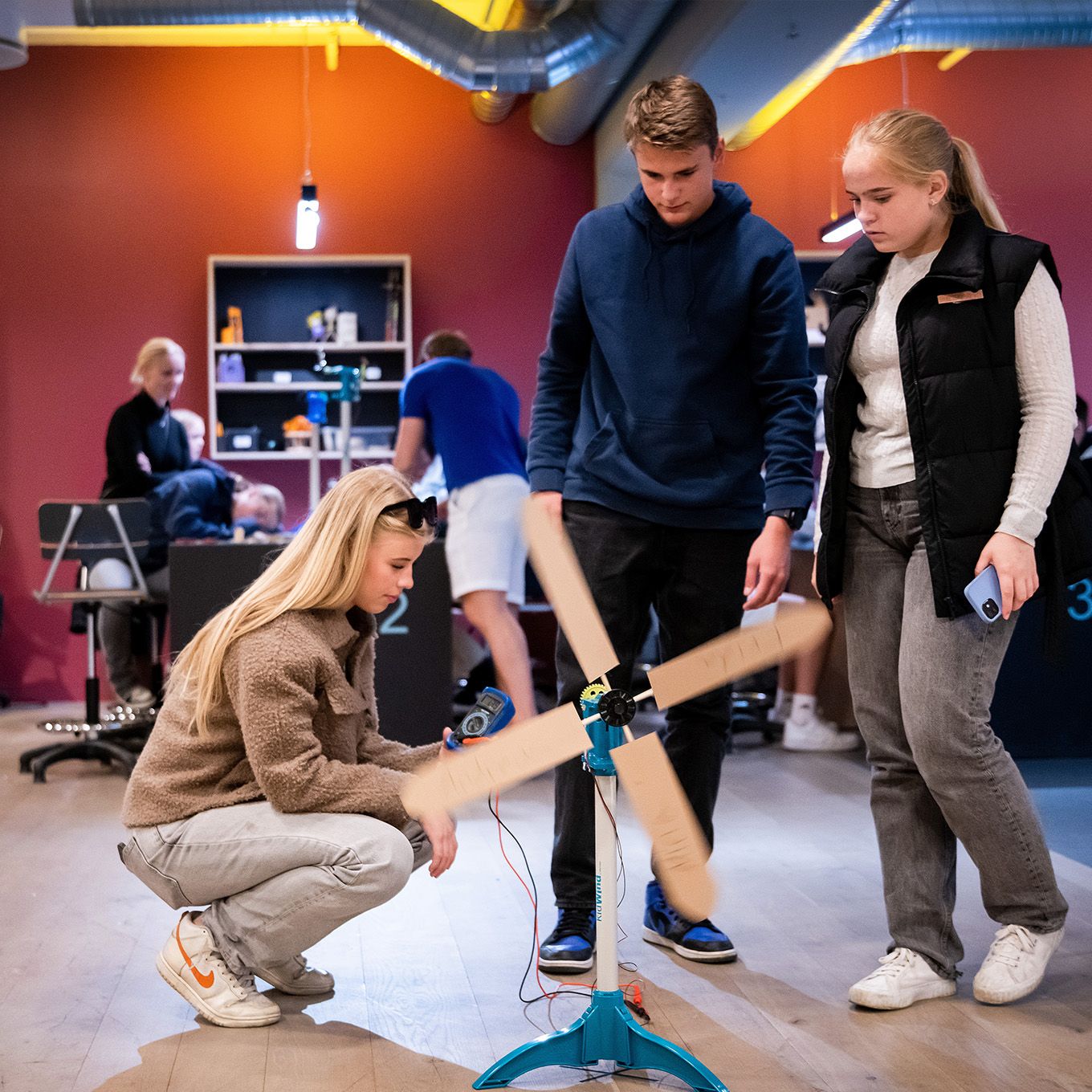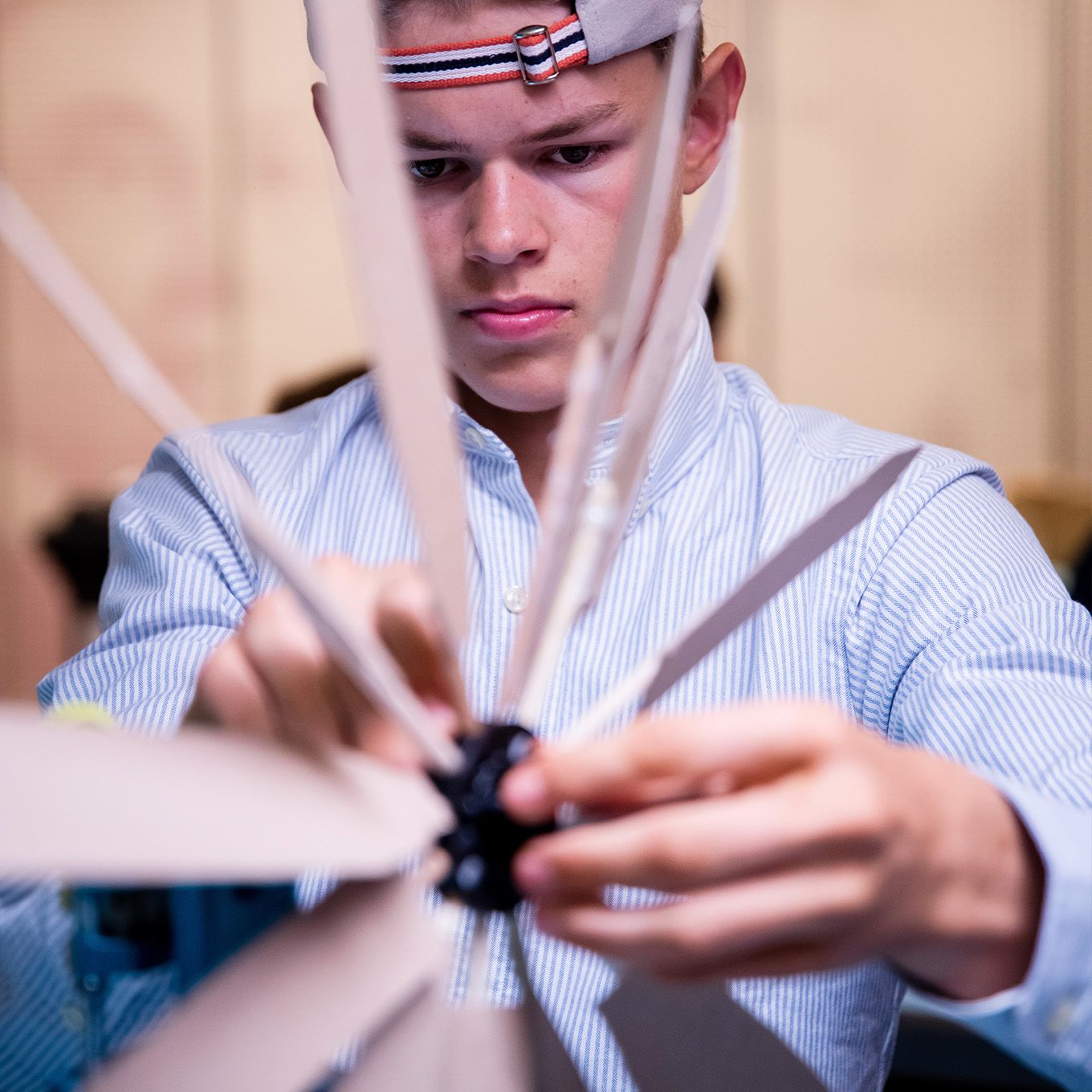Science
Mills in the wind
In Møller i vinden, students will experiment in groups with wind turbines and test in front of a wind machine. The aim is to achieve the highest possible tension, and the winner is chosen in a final competition.
Target group : 8.-10. steps
Number : Max. 30 students
Duration : 75 minutes
Field of study : Physics, energy
In the event of non-attendance without cancellation seven days before the day of attendance, the client will be invoiced a fee of NOK 500.
Curriculum:
Competence target social studies
- Explain energy conservation and energy quality and explore different ways of converting, transporting and storing energy
Core elements:
- Scientific practices and ways of thinking
What happens in this learning offer?
Windmills is a group activity in a creative workshop. The class gets a brief introduction to wind power before and now, before they start the task. The groups must test different angles, shape and size of the wind turbine's rotor blades, to see what gives the best results. This offer has a practical approach to wind power, where collaboration, experimentation and measurement are central.
Description of the lesson:
The students must work together in 3s and 3s, we recommend that the teacher divides the students in advance
Intro (approx. 15 min):
- The pupils are picked up by an educator and taken to the creative workshop.
- An educator gives a presentation about wind power before and now
- The students are explained the task they will be working on
- One person from each group collects the equipment they need to start the task
Experiments (approx. 45 min):
- The groups experiment and test the wind turbines, right up to the final competition
- Two pedagogues walk around and help the groups at all times.
End (hour):
- Competition with the wind turbines, which group gets the highest voltage?
- Cleaning up
- Final conversation between the pedagogues and the students
We want you as a teacher to be active, participating and curious with the children during the visit. The students get the best results if they come prepared, so feel free to show the students pictures or the "INTROVIDEO", tell them about what will happen, and check whether there is associated pre- and post-work for the teaching plan
You as a teacher are responsible for the group during the entire visit.
Explainer is responsible for implementing the program. The teacher has overall responsibility for the students. You may be asked to help along the way.
If you want an invoice, include the resource number and the correct invoice address.
You do not need to bring anything special to the Planetarium, but it is great if you have lots of questions about stars and planets.
If you have also seen the moon on a day when it is visible during the day, that is great!
Preparations
One of the teachers in the group approaches the reception. We will then register that you have arrived and you will be allocated a cloakroom space and possibly cabinet for locking up valuables.
Arrive at the museum no later than 10 minutes before the start of the program. Let us know if you will be delayed by phone. 22 79 60 00 . If you arrive late, the learning offer may be shortened or cancelled.
Click here to find the way to The Norwegian Museum of Science and Technology .
At The Norwegian Museum of Science and Technology the same rules apply as at school/kindergarten. We will
- be role models for each other
- be kind to each other and the exhibits
- use consensus
- don't run.
ATTENTION: Everything behind barriers must not be touched.
Then we all have fun and contribute to a good learning experience. If you decide that your group can visit the museum shop, the teacher must be present as long as some of the children are there.
You can eat the packed lunch in different places; in the cafe, at the reception and outside the museum entrance. It is not allowed to eat or drink in the exhibitions.
Kindergartens and schools can pay by cash/card on arrival or bring an invoice.
For invoices, you must include the requisition or resource number and invoice address.
You meet one of us!

Kjersti

Caspar

Others

Joachim
Preparation:
Our learning offers do not require preparatory work, but it is always useful to prepare students for a museum visit. This can increase the learning outcomes from the museum activity, and links the classroom to the museum. Here are some wondering questions for the class, which can prepare and engage the students before they learn more about the topic at the museum
Wonder question
-
Do you have examples of renewable and non-renewable energy?
-
What kind of energy sources do we have most of in Norway?
-
What advantages and disadvantages can wind power in Norway have?





